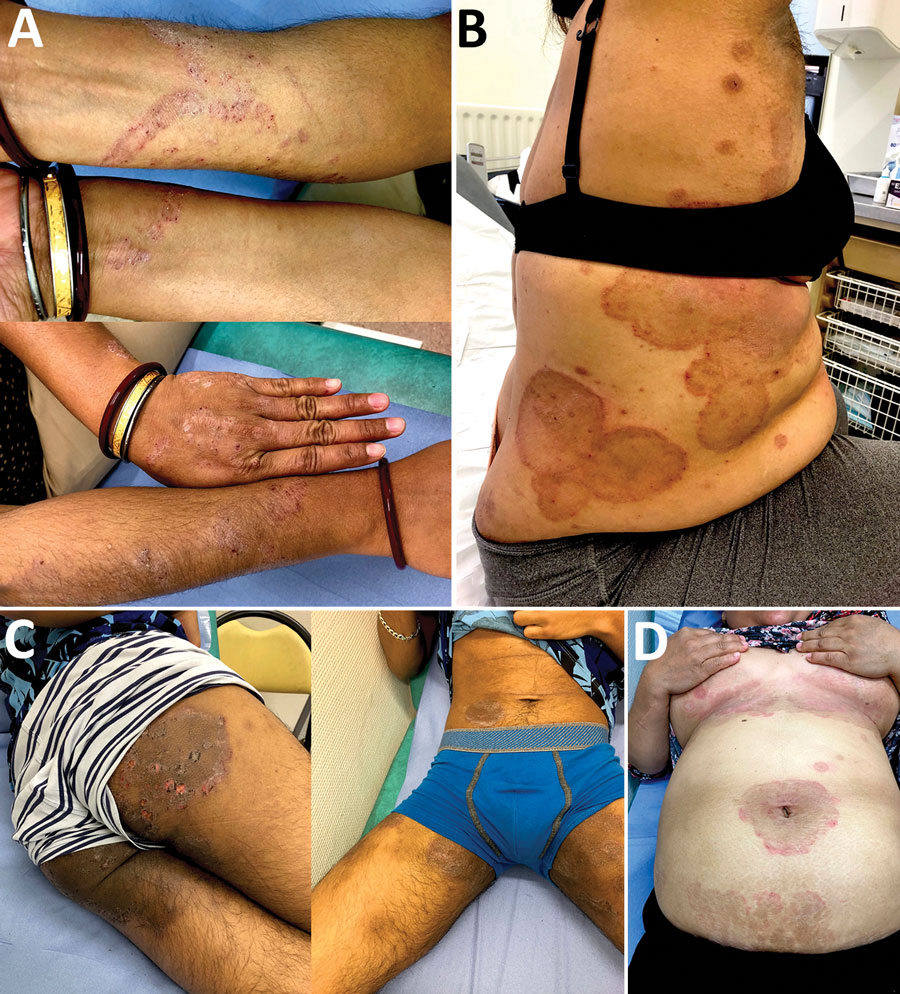Volume 28, Number 1—January 2022
Dispatch
Emergence of Difficult-to-Treat Tinea Corporis Caused by Trichophyton mentagrophytes Complex Isolates, Paris, France
Figure 1

Figure 1. Morphologic features of difficult-to-treat dermatophytosis caused by Trichophyton mentagrophytes complex internal transcribed spacer type VIII (T. indotineae) in patients in Paris, France. A) Scaly plaques with erythema and surrounding papulae and vesicles of the arms (patient 1); B) centrifuge annular erythema of the trunk after topical and oral corticosteroids (patient 6); C) erythematous and scaly plaques (patient 3); D) pruritic cutaneous lesions of the groin and axillary pits to which was applied steroids (patient 5).
1These authors contributed equally to this article.
Page created: December 08, 2021
Page updated: December 20, 2021
Page reviewed: December 20, 2021
The conclusions, findings, and opinions expressed by authors contributing to this journal do not necessarily reflect the official position of the U.S. Department of Health and Human Services, the Public Health Service, the Centers for Disease Control and Prevention, or the authors' affiliated institutions. Use of trade names is for identification only and does not imply endorsement by any of the groups named above.